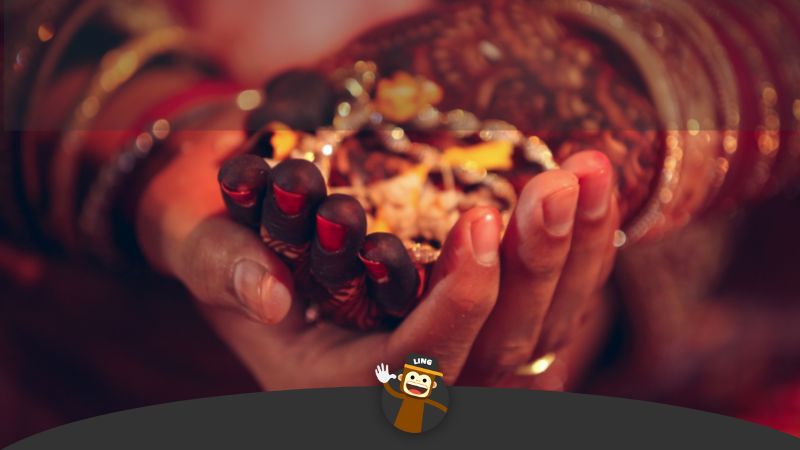There are many similarities between a Punjabi wedding and a western wedding ceremony. But there are numerous wedding rituals, religious traditions, and ceremonies specific to only Punjabi weddings. Here is a dynamic overview of the five best things about a Punjabi Wedding that makes it the talk of the town!
The Official Engagement Or The Kurmai Ceremony
The Kurmai ceremony often happens in the bride’s family, where the bride and groom’s family members attend and exchange gifts. It is a declaration that the bride and groom are no longer available and are officially betrothed.
Now, plans are also made, like the wedding venue selection, wedding attire, and whether or not it will be a typical Sikh Wedding ceremony.
Chunni Ceremony
The groom’s family members visit the bride’s home bearing gifts, including sweets, jewelry, and a traditional outfit, usually red in color. A red scarf called chunni or chunari is draped over the head of the bride, almost adorning her as ready for marriage. Sagai or engagement ceremony is often on the same day as the Chunni ceremony.
Unlike western engagements, where only the bride gets a ring, in Punjabi, engagement rings are exchanged between the bride and groom. Gifts are exchanged, and families get to know each other.
Mehendi Ceremony And Sangeet Ceremony
As they often occur on the same day, the Mehendi or henna application ceremony falls next in the line before the wedding. In this culture, the darker the color of the henna decorations on the hand, the deeper the groom’s love for the bride is.
Often the bride will hide the initials of the groom’s name in the henna design, and it would be a fun game for the groom and mostly female friends to look for his name on her palms.
Several relatives will also apply the henna to the bride’s hands and then join in to adorn their hands with intricate designs. It is primarily a ceremony for the bride and the women of both parties.
Bollywood cannot do justice to the absolute fun and joy that the Sangeet ceremony holds. Music, group dancing, performances by family members and friends, games for couples, singles, and newlyweds, and of course – the food is a total delight in the Punjabi culture!
Choodha Chadhana
In this ritual, the eldest maternal uncle presents red and ivory bangles to the bride. This is why the ritual is called Choodha Chadhana (putting on bangles).
They are purified in milk and rose petals. The maternal uncle then puts it on his niece. The bride wears these bangles for a month after the wedding.
Kaleeras are tied to the bangles, which are supposed to make it look more glamorous. The bride at the wedding is supposed to shake off the kaleeras over the head of an unmarried lady who she wishes to see get married next.
Mayan Ceremony
The Tumeric application ceremony or Haldi ceremony gives similar vibes as the Sangeet. It may happen a day before the wedding or the morning/afternoon of the wedding day.
The application of turmeric to the skin is considered a cosmetic/beautifying ritual. The mixture of rosewater, turmeric, sandalwood, and mustard oil has tremendous benefits on the skin – giving a youthful glow. It is applied to the face, arms, and feet, the visible parts of the bride’s body, and the groom’s body by family and friends.
After this, the bride is taken to a nearby temple by the bride’s brother and female family members. Holy water is poured on her, and she seeks the blessings of the gods.
Sehrabandi Ceremony

The groom is prepared for the wedding. A turban is placed on his head called a sehera that covers his face. The ceremony is Sehrabandi which means turban placing. The bride’s family then gives a warm welcome to the baraatis or the groom’s close relatives.
They come into the bride’s house dancing to Punjabi wedding songs as part of Punjabi wedding traditions. A tikka is placed on the groom’s forehead upon arrival at the home. And then comes the groom’s family to the bride’s beautifully decorated home.
The bride arrives in the wedding lehenga holding a Varmaala. This is a garland of flowers that she puts on the groom and the bride. The Roka ceremony marks Punjabi wedding history. Following the old Vedic tradition, the groom’s family sits at the fire, and he sprinkles water on his body and around himself.
The Final Ceremony
For every traditional ceremony, Kanyadaan is done where the bride’s father puts the hands of the bride on top of the groom’s hands. Then ask the groom to take care of her, and treat her with love and affection. This particular part of the wedding ceremony often brings tears to most people’s eyes.
The couple hold hands or are connected with a long garment tied in a knot together. Then they stand and walk around the sacred fire while vows are recited. Each loop around the fire is symbolic of cementing the marriage with vows.
Following the seven pheras or circling the fire, the couple then stands. The groom places a pinch of vermillion on the parting of his bride’s head, signifying that she is married. It is said that this bond is to last seven lifetimes.
Joota Chupai
To lighten the mood that weddings reflect, once the wedding rituals are over, the groom’s shoes are hidden by the bride’s sister or female relatives. They can demand a ransom from the groom’s party in exchange for the shoes.
The concept is – you have our sister now, so give us something before leaving! It brings a lot of joy to both families.
The bride then bids farewell to her maiden home and leaves for her new home, her husband’s home, to start their new married life. She then follows the groom and his family to leave.
The bride is now welcomed to the groom’s home by her mother-in-law. The bride turns a pot of rice with her right foot and enters the house. The bride sits in front of the family, and the veil is lifted from her head. The family, friends, and elders shower her with gifts and blessings.
Punjabi And Ling
Wedding celebrations are unique in every culture. But Punjabi wedding traditions with traditional wedding songs, rituals, and the celebrations that follow on the dance floor make it a unique program worth attending at least once in this lifetime!
Let Ling accompany you if you plan to attend this special celebration. Ling is a language learning app that can be the best support you need to learn Punjabi.
Try the Ling app to start learning Punjabi today!



















